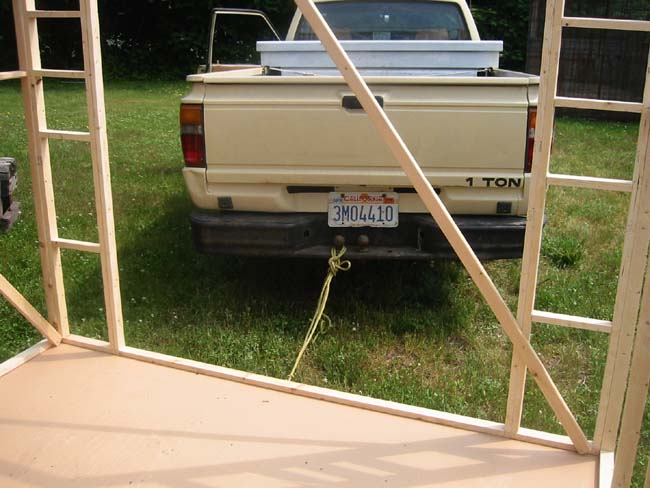Roof three, frame support
Page 3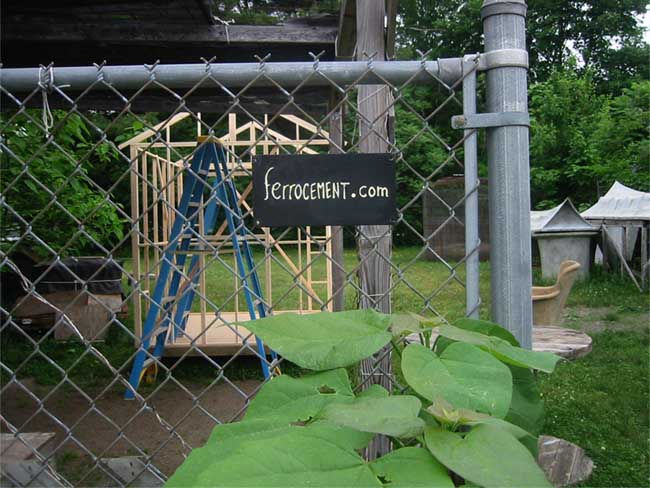

The design choice to temporarily set aside development of molds slowly grew from the time consuming nature of mold-making. Although the wood framing is not necessary once the structure is complete, something is needed to hold the material in place during construction. The price of bamboo delivered to the Roof Laboratory is approximately ten times greater than wood imported from ecologically managed forests in Sweden, the choice of framing materials was also made based on price.
The original plan was to use acrylic and fabric for the walls as well as the roof and simulate an entire bamboo structure. This was changed on the idea that the shed might be slightly more suitable for transport over rough roads with plywood walls.
The stud size utilized to simulate bamboo is 2 x 4 centimeters (3/4 x 1 1/2Ó). Four of these studs can be cut from a 2Ó x 4Ó stud, which is actually 1.5 x 3.5 inches. A modern, thin saw blade is required so that less of the wood is turned into sawdust.
A primary goal of development research is to indicate possible business structures and production systems. This series of photographs begins by presenting a floor as being delivered to a wall framing area. There are areas of the world where the floor is omitted. There are also areas where the floor might be a float, like a floating dock. A bamboo association in China, for example, recently promoted a world wide contest to build a floating house practical for Bangladesh. In that case, the floor pictured below might be a bamboo frame covered like the roof being analyzed.
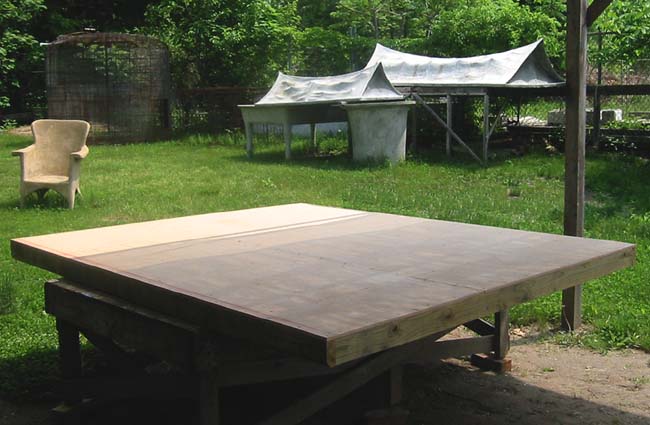
If several houses are to be made for the same local at the same time, walls can be stocked according to standards set up for the development project.
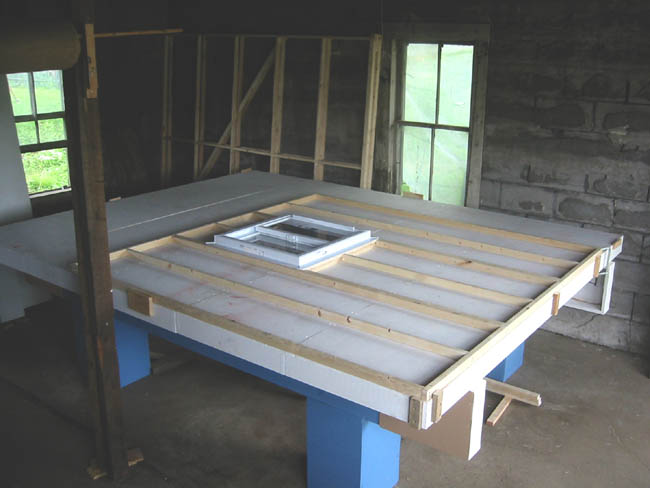
After the walls are on the floor it may be necessary to move to a different location to place the roof. A small truck like this can easily move what is too heavy for a person. I have picked up many bales of hay standing on a sled dragged behind a tractor and can personally testify that multi-ton loads are quite easy to drag with a small tractor. In other words, this movement technique can be efficiently scaled up to very large.
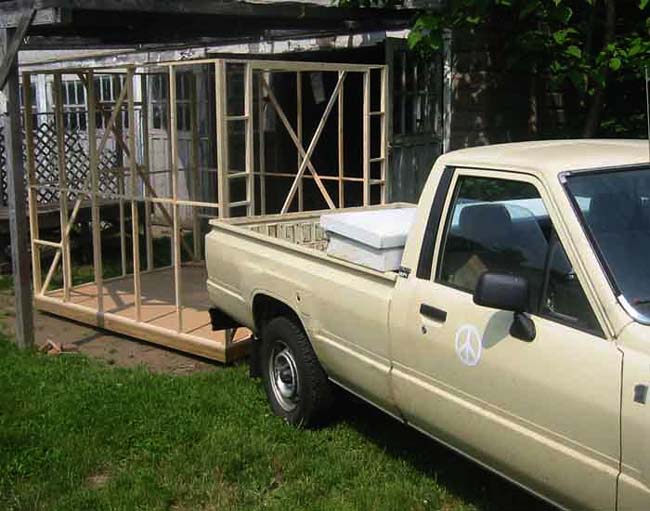
Place two pieces of wood under the floor like runners on a sled. Nail a cross piece front and back. Light rope from the forward crosspiece to the truck is all that is needed to pull a small structure like this.
